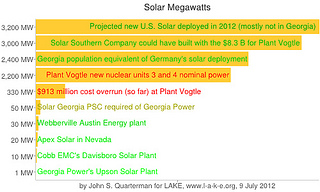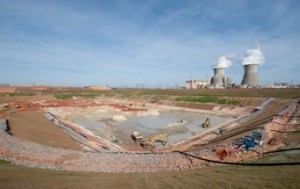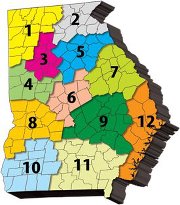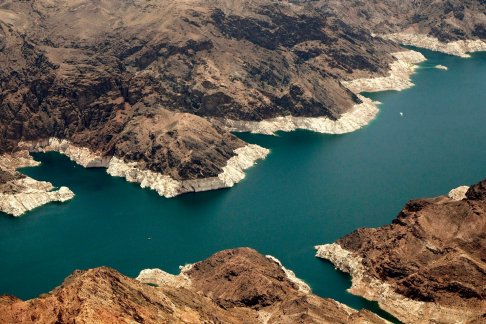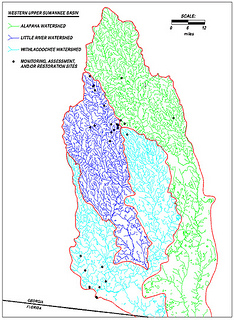At yesterday’s Big Bets movie premiere, Southern Company doubled down and dug deeper in the hole.
Joeff Davis wrote for Fresh Loaf yesterday, Protesters picket utility’s Midtown film premiere, blast construction of new nuclear reactors
On the same day that tens of thousands of protesters rallied in Tokyo against the restart of Japan’s nuclear reactors, roughly 30 protesters chanted, marched, and handed out flyers today in Midtown to protest against Georgia Power’s construction of two new nuclear reactors in eastern Georgia. The two units, which are located about 175 miles from downtown Atlanta, are the first to be built in the United States in nearly three decades.
“Georgia Power is using our money to pay for something we don’t need, we don’t want and is killing us,” said Margie Resse as she handed out flyers outside the Fox Theatre. Southern Company, Georgia Power’s parent company, had reserved the historic Midtown venue to screen a documentary that it commissioned about the utility’s 100-year history for shareholders and executives.
The flyers claimed that Southern Company used “its notorious lobbying machine to
push a $2 billion rate hike” onto Georgia ratepayers to build “two risky nuclear reactors on the Savannah River,” which the groups say are months behind schedule and $900 million overbudget. The flyer urges ratepayers to refuse to pay a fee tacked on to utility bills that helps pay for the reactors’ construction.
Southern Company Spokesman Steve Higginbottom, standing just inside
the Fox Theatre’s entrance and speaking barely above the protesters’ chants, said that Southern Company supports the rights of protesters but disputes their claims.
The “$900 million” figure cited by protesters, he said, has been alleged by Westinghouse, the manufacturer of the reactor, and Shaw, the project’s general contractor.
Um, Southern Company’s response is to talk about infighting among the consortium building the new nukes? SO could be digging themselves a hole deeper than the one the reactors sit in….
I do compliment Higginbottom and Southern Company on being consistently civil, however.
-jsq









